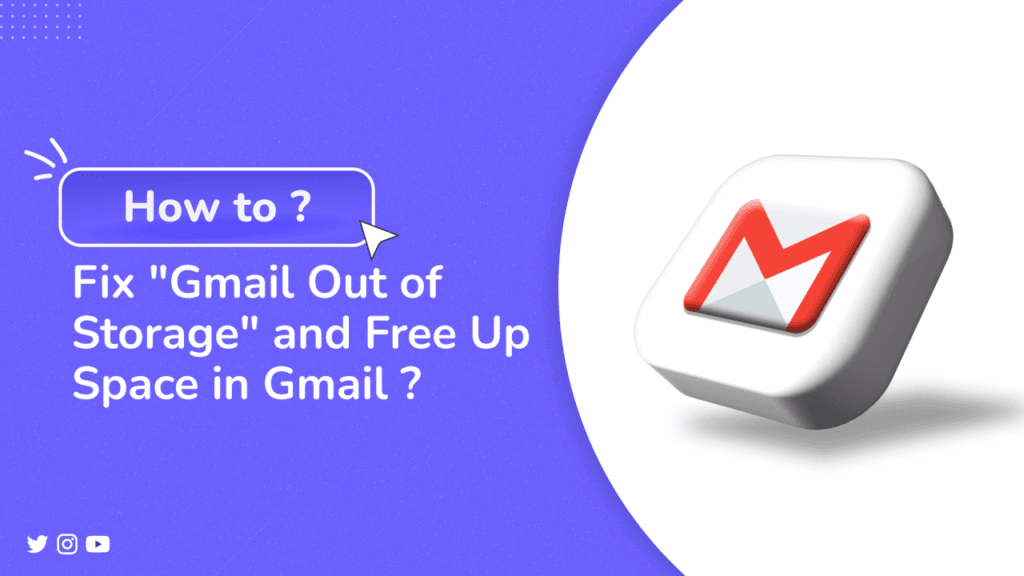How to Free Up 15GB of Storage in Your Gmail Without Losing Any Data
Is your Gmail storage full? Don’t panic! With Gmail’s 15GB free storage quickly filling up due to large files or numerous photos, it’s essential to manage your space effectively. You don’t have to delete your valuable emails and files. Instead, you can transfer your messages to a new account, giving your old one a fresh start. Here’s a detailed guide on how to do just that.
Understanding Gmail Storage Limits
Gmail offers 15GB of free storage shared between Gmail, Google Drive, and Google Photos. This space fills up fast with large email attachments or extensive photo libraries. When storage reaches its limit, you can’t send or receive emails until you free up space. The immediate solution might be upgrading to a Google One plan, but this involves a cost and might not always be necessary. Instead, consider transferring your emails to a new account.
Step-by-Step Guide to Transferring Your Gmail Messages[How to Free Up 15GB of Storage in Your Gmail ]
1. Backup Your Gmail Data
Before you start the transfer process, back up your data:
- Visit Google Takeout.
- Select Gmail and any other data you wish to back up.
- Click Next Step, choose your file type and delivery method.
- Click Create Export. This can take several hours depending on the amount of data.
2. Create a New Gmail Account
Set up a new Gmail account to serve as your archive:
- Go to Gmail and create a new account.
- This new account will store your old emails, helping you manage storage more effectively.
3. Enable POP Access on Your Original Account
Prepare your original Gmail account for transfer:
- Log into your original Gmail account.
- Click the gear icon and select See all settings.
- Navigate to the Forwarding and POP/IMAP tab.
- Under POP Download, select Enable POP for all mail.
- Choose delete Gmail’s copy if you want to remove the emails from the original account post-transfer.
- Click Save Changes.
4. Set Up Email Import in Your New Account
Configure your new Gmail account to import old emails:
- Log into your new Gmail account.
- Click the gear icon and select See all settings.
- Go to the Accounts and Import tab.
- Click Add a mail account next to Check mail from other accounts.
- Enter your old Gmail address and click Next.
- Choose Import emails from my other account (POP3) and click Next.
- Enter your old Gmail account’s password. If needed, create a Google app password.
- To create an app password, visit the app passwords page, generate a new 16-digit password, and use it for the transfer.
- Set Port to 995 and check the following boxes:
- Always use a secure connection (SSL) when retrieving mail
- Label incoming messages
- Archive incoming messages (Skip the Inbox)
- Click Add Account.
5. Monitor and Clean Up
Manage the transfer process and clean up your old account:
- The transfer will start automatically, which may take several hours to days based on the number of emails.
- After the transfer, your original account will move emails to the Trash. Go to Trash and empty it to free up space.
Table: Key Steps for Transferring Gmail Messages
| Step | Action |
|---|---|
| 1. Backup Data | Use Google Takeout to download your emails and data. |
| 2. Create New Account | Set up a new Gmail account for archiving your old messages. |
| 3. Enable POP Access | Adjust settings in the original account to allow POP access. |
| 4. Import Emails | Configure your new account to fetch emails from the old account. |
| 5. Clean Up | Empty the Trash folder in the original account to recover storage. |
Important Considerations[How to Free Up 15GB of Storage in Your Gmail ]
- Drafts and Spam: Emails in Drafts and Spam will not transfer. Manually handle your Drafts and allow Spam to be managed automatically.
- App Passwords: If you used an app password, delete it after the transfer to ensure account security.
- Account Activity: Google will delete inactive accounts after two years. To keep your archive account active, sign in at least once every two years.
By following this guide[How to Free Up 15GB of Storage in Your Gmail ], you can efficiently manage your Gmail storage and keep all your important emails intact. This method provides a cost-effective solution to handling storage limits while ensuring that no data is lost. Enjoy a fresh, organized Gmail account and ample space for future needs!

